Pioneering Sustainable Lithium
Plug into our story: Bridging green energy and pioneering lithium extraction, unleashing innovative technology, and the lithium market.
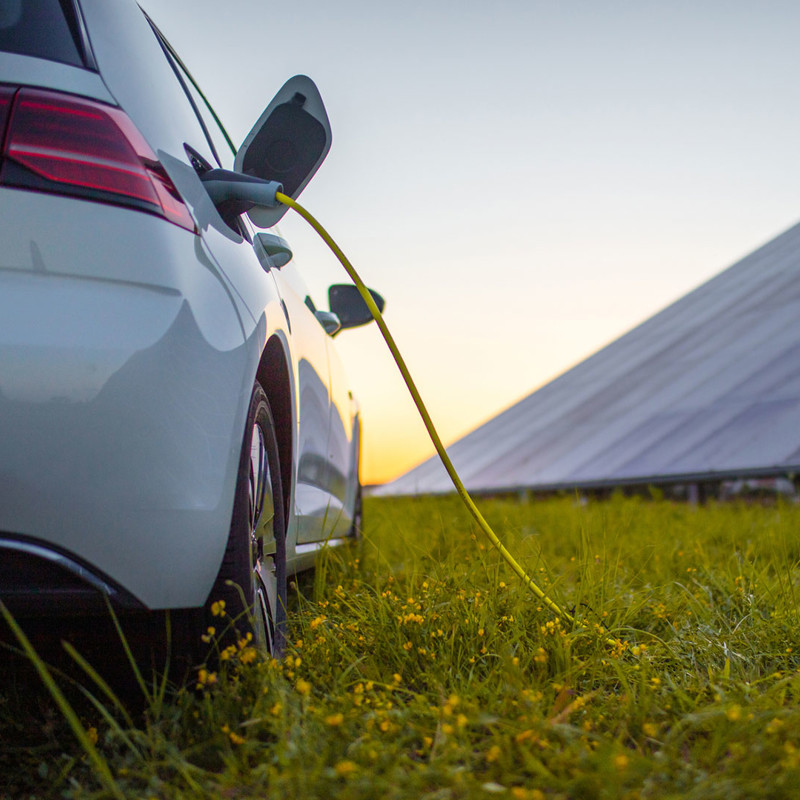
Introduction to the Sustainable Path Forward
Welcome to Lithium Harvest, where we navigate the journey toward a sustainable energy future. Our current energy landscape is marked by the urgent need to reduce greenhouse gas (GHG) emissions. The legacy of over a century of reliance on fossil fuels has led to a critical juncture; the atmosphere laden with GHGs is altering our climate at an alarming rate. The call for change is clear and unmistakable.
Here, at the forefront of the green energy revolution, we invite you to explore how our commitment to sustainable lithium extraction drives innovation and delivers value. Delve into our strategies, technologies, and market insights that distinguish us as frontrunners in the energy realm. Uncover the expansive potential and impact of the lithium mining industry and engage with us as we endeavor to revolutionize the lithium mining industry.
Our Planet Is Running Low on Battery

The Environmental Challenge: A Call to Action
Our planet stands at a critical juncture. The cumulative impact of over a century and a half of industrialization, where greenhouse gases (GHGs) have been emitted into the atmosphere, is evident in the climatic shifts we are witnessing. These gases trap heat, leading to a warming planet. GHGs from human activities have significantly raised Earth's temperatures over the last 150 years, with the most substantial increases stemming from fossil fuels burned for transportation, electricity, and industry. In 2021 alone, our global carbon footprint surged to 37.12 gigatons of CO₂, with projections indicating a potential escalation to 42 gigatons by 2030.
This uptrend in emissions coincides with a concerning rise in global temperatures. The Earth's air temperatures have risen since the Industrial Revolution's dawn. While natural phenomena contribute to climatic ebbs and flows, scientists' overwhelming consensus is that human-induced greenhouse gas emissions are the principal culprits behind the warming we are experiencing. Data from NASA's Goddard Institute for Space Studies reveals a 1.17°C (2.11°F) increase since the late 19th century, most intensively since 1975. Science shows that to avert the worst impacts of climate change and preserve a livable planet, global temperature increase needs to be limited to 1.5°C above pre-industrial levels. To keep global warming to no more than 1.5°C – as called for in the Paris Agreement – emissions need to be reduced by 45% by 2030 and reach net zero by 2050.
History teaches us that even a one-degree global temperature change is significant because it takes a vast amount of heat to warm all the oceans, the atmosphere, and the land masses by that much. In the past, a one- to two-degree drop was all it took to plunge the Earth into the Little Ice Age. A five-degree drop was enough to bury a large part of North America under a towering ice mass 20,000 years ago. These historical precedents starkly remind us of the narrow climatic ledge upon which we currently stand. Our generation now faces the monumental task of reversing this trend to preserve a livable planet for future generations.

Greenhouse Gas Emission by Industry
Greenhouse gas emissions permeate through every sector of our economy, with key industries contributing significantly to our environmental footprint. The primary sources are transportation, electric power generation, industry, and the residential and commercial sectors.
-
Transportation
The transportation sector generates the largest share of GHG emissions (28% of 2021 GHG emissions in the U.S.). GHG emissions from transportation primarily come from burning fossil fuels for our cars, trucks, ships, trains, and planes.
In addition, particulate matter (PM) emissions from internal combustion engines (ICEs) have been linked to various health problems in humans, and therefore, reducing PM emissions will have many health and social benefits. In response to these health impacts, governments have implemented legislation regulating PM emissions from ICEs. Due to economic growth, pollution in major cities has reached historically high PM levels.
Over 94% of the fuel used for transportation is petroleum-based,
primarily gasoline and diesel. -
Electricity Production
Electric power generates the second largest share of GHG emissions (25% of 2021 GHG emissions in the U.S.) and includes emissions from electricity production used by other end-use sectors (e.g., industry). 79% of our electricity comes from burning fossil fuels, mainly coal and natural gas.
-
Industry
GHG emissions from industry (23% of 2021 GHG emissions in the U.S.) primarily come from burning fossil fuels for energy, as well as GHG emissions from certain chemical reactions necessary to produce goods from raw materials. If emissions from electrical use are allocated to the industrial end-use sector, industrial activities account for a much larger share of U.S. GHG emissions.
-
Commercial & Residential
GHG emissions from the commercial and residential sector (13% of 2021 GHG emissions in the U.S.) include fossil fuels burned for heat, lighting, and the use of gases for refrigeration and cooling in businesses and homes, as well as non-building-specific emissions such as waste handling. If emissions from electrical use are allocated to the commercial and residential end-use sectors, commercial and residential activities account for a much larger share of U.S. greenhouse gas emissions.
The Solution to Climate Change
As the world confronts the pressing issue of global warming, two pivotal shifts are at the core of our collective response: the adoption of renewable energy sources and the electrification of transportation. These transformative movements, underpinned by lithium-ion technology, accelerate our departure from fossil fuels and drive a cleaner, more sustainable future.
Renewable Energy
The key to managing global warming is limiting GHG emissions by transitioning from fossil fuels to intermittent renewable energy sources (IRES), such as wind power, solar power, and hydroelectric. However, transitioning from fossil fuels to IRES requires an efficient and reliable energy storage solution. Lithium-ion batteries are an efficient and scalable solution for storing renewable energy, facilitating the integration of IRES, and reducing reliance on fossil fuels.
Electrification of Transportation
Electric vehicles are the key technology to decarbonize the transportation industry, a sector that accounted for 28% of U.S. GHG emissions in 2021. Lithium-ion batteries have revolutionized the automotive industry and are propelling the adoption of EVs. Lithium-ion batteries offer increased energy density, lower weight, longer range, and faster charging capabilities.
Exponential Growth in EV Sales
The electric vehicle (EV) market is witnessing exponential growth, underscored by the surge in sales that exceeded 10 million vehicles in 2022 and 14 million in 2023 – a 35% increase from the prior year. This remarkable growth trajectory has seen EV sales increase more than fourfold in four years, from 2020 to 2023.
This surge in market share is driven by national policies and incentives aimed at promoting the adoption of EVs, signifying a global pivot towards more sustainable transportation methods.
The EV market is expected to maintain its upward momentum into 2024, with sales projections nearing 17 million units globally with a YoY growth rate of 18%.

EVs Are Rapidly Gaining Market Share
EVs are rapidly capturing market share in the global automotive industry sales, debunking myths that consumers are hesitant to transition from traditional internal combustion engine vehicles to electric alternatives. The growth in EV market share of total passenger vehicle sales from 2020 to 2023 presents a compelling narrative of acceptance and demand. Starting from 4.4% in 2020, the market share has experienced a remarkable upward trajectory, reaching almost 20% by 2023.
While overall vehicle sales may experience fluctuations due to various economic factors, the trend for EV sales distinctly moves upwards. This steady increase in market share is a testament to the growing consumer confidence in EV technology and a clear trend of rapid adoption and integration of electric vehicles into the mainstream auto market.

The Car Industry Is Moving Toward EVs
The automotive industry is surging in its shift to electric vehicles (EVs), fueled by a growing consumer preference for environmentally conscious transport. Bloomberg New Energy Finance forecasts EVs will account for 70% of new passenger vehicle sales globally by 2040. To bolster this shift, governments worldwide are advancing EV adoption through incentives like tax rebates and subsidies alongside mandates for increased production of low-emission vehicles.
Leading auto manufacturers are aligning with this trend and setting aggressive targets for electrification. Volvo aims to exclusively sell electric vehicles by 2030, while General Motors has set a goal to offer EVs exclusively by 2035. This pivot to electrification represents a transformative era for the auto industry, emphasizing a steadfast commitment to sustainability and environmental responsibility.
Before 2030 |
Before 2035 |
Before 2040 |
Before 2050 |
|
|---|---|---|---|---|
| Countries | Denmark Ireland, Island, Sweden, Israel, Netherlands, Singapore, Slovenia, and UK will ban ICE vehicle sales (Norway already in 2025). | Cabo Verde, China, Japan, Canada, California. US, the rest of EU to ban ICE vehicle sales | France, Spain, Taiwan, Sri Lanka, Vietnam ban ICE vehicle sales | Costa Rica ban ICE vehicle sales |
| Volkswagen | 1.5 million electric cars to be produced (already in 2025) | Stops ICE vehicle sales | - | - |
| Volvo | 50% of global sales to be fully electric cars (already in 2025) | - | - | - |
| Toyota | 40 new or updated electrified models, including at least one PHEV a year (already in 2025) | - | - | Stop ICE vehicle sales globally |
| Jaguar | Stops ICE vehicle sales (already in 2025) | - | - | - |
| Bentley | Stops ICE vehicle sales | - | - | - |
| Tesla | Aim to sell 20,000,000 EVs | - | - | - |
| Mercedes-Benz | More than 50% of Mercedes-Benz global car sales to be electric | - | Stop ICE vehicle sales | - |
| Hyundai | Aims to sell 3.5 million EVs globally | - | All gas cars will be phased out | - |
| Nissan | - | All new models in its lineup will be powered entirely by electricity | - | Stop ICE vehicle sales globally |
| General Motors | - | Aim to stop selling ICE cars by 2035 | - | - |
| Ford | - | - | Signed a pledge to phase out all of its fossil fuel vehicles by 2040 | - |
| Renault | - | - | - | Stop ICE vehicle sales globally |
| Mazda | - | - | - | Stop ICE vehicle sales globally |
| BMW | - | - | - | Stop ICE vehicle sales globally |
| Mitsubishi Motors | - | - | - | Stop ICE vehicle sales globally |
Before 2030
Before 2035
Before 2040
Before 2050
Global Initiatives & Regulatory Developments
Global initiatives and regulatory frameworks play a crucial role in steering the collective action toward a more sustainable future. These policies and agreements shape the trajectory of industry and consumer behavior, incentivizing progress while establishing benchmarks for success in the transition to greener practices.
-
Global Alliances
A growing coalition of countries, cities, businesses, and other institutions are pledging to get to net-zero emissions. More than 70 countries, including the biggest polluters – China, the United States, and the European Union – have set a net-zero target, covering about 76% of global emissions. More than 3,000 businesses and financial institutions are working with the Science-Based Targets Initiative to reduce their emissions in line with climate science. Over 1000 cities, over 1000 educational institutions, and over 400 financial institutions have joined the Race to Zero, pledging to take rigorous, immediate action to halve global emissions by 2030.
The energy sector is the source of around three-quarters of greenhouse gas emissions today and holds the key to averting the worst effects of climate change. Replacing polluting coal, gas, and oil-fired power with energy from renewable sources, such as wind or solar, would dramatically reduce carbon emissions. This transition can only be achieved by increasing the use of energy storage solutions, such as Lithium-ion batteries, and electrifying transportation.
-
Banning of ICE Vehicles
Vehicles powered by fossil fuels, such as gasoline and diesel, are set to be phased out by several countries.
Many countries and cities worldwide have already stated they will ban the sales of passenger vehicles (primarily cars and buses) powered by fossil fuels at some time in the future.
A few places have also set dates for banning other types of vehicles, such as fossil-fueled ships and lorries.
In addition to these national bans, more than 100 countries, cities, financial institutions, and multinationals, including Ford Motor Company, General Motors, Volvo Cars, and other automakers, signed the Glasgow Declaration on Zero-Emission Cars and Vans to end the sale of internal combustion engines by 2035 in leading markets, and by 2040 worldwide.
-
The Inflation Reduction Act
The Inflation Reduction Act underscores the imperative for the United States to achieve autonomy in lithium production, a critical component of the burgeoning electric vehicle (EV) industry and renewable energy sector. In a significant move to bolster domestic capabilities, the U.S. government unveiled the National Blueprint for Lithium Batteries 2021-2030. This strategic document lays out a comprehensive framework for creating a resilient supply chain for battery materials and technologies within the nation. It aims to encourage EV manufacturers to ramp up production in North America and diversify the sourcing of essential minerals from countries with free-trade agreements with the U.S., thereby reducing reliance on China.
These regulatory measures are reshaping the global supply chain landscape, signaling a shift towards more geographically diversified and secure sources of raw materials. The United States is actively seeking to expand its supply chain development efforts, as evidenced by its negotiations with the European Union (EU) on extending U.S. tax credits. This move aligns with the EU’s pursuit of dependable partners for the supply of raw materials, potentially paving the way for a collaborative EV ecosystem between the U.S. and the EU.
However, the challenge remains formidable, with the current production of Lithium Carbonate Equivalent (LCE) in the U.S. and Europe nearly nonexistent. This scenario indicates a market in transition, with concerted efforts aimed at securing lithium and other vital materials essential for the green energy transition. The strategic response to these developments will be critical in shaping the future of sustainable energy and transportation.
-
The European Critical Raw Material Act
European Union announced the Critical Raw Materials action plan in March 2023.
The Act will reduce the administrative burden and simplify permitting procedures for critical raw materials projects in the EU, Strengthening the uptake and deployment of breakthrough technologies in critical raw materials. However, as the EU accepts that it will never be self-sufficient in supplying such raw materials, it has focused on supporting global production and ensuring supply diversification.
The EU must strengthen its global engagement with reliable partners to develop and diversify investment, promote stability in international trade, and strengthen legal certainty for investors. Additionally, the Act provides for monitoring critical raw materials supply chains to ensure their resilience.
The EU will focus on improving the circularity and sustainability of critical raw materials. A partnership on critical raw materials and a Raw Materials Academy will promote skills relevant to the workforce in critical raw materials supply chains. It will further develop strategic alliances: The EU will work with reliable partners to promote their economic development sustainably through value chain creation in their own countries while also promoting secure, resilient, affordable, and sufficiently diversified value chains for the EU.
-
The European Batteries Regulation
The European Union has initiated a significant regulatory change by introducing the new EU Battery Regulation, which began to apply on 18 February 2024. This regulation represents a landmark move towards more sustainable, circular, and safe battery production and use within the EU. However, it's important to note that the regulation's provisions are not all applied immediately but are introduced in phases over the coming years. This phased approach allows for some aspects of the regulation to become stricter over time, with certain areas of implementation still to be defined.
One of the regulation's critical requirements is that manufacturers and importers of batteries intending to enter the European market must comply with these new standards. Non-compliance could lead to significant penalties, including restricting or withdrawing non-compliant batteries from the market, depending on the enforcement policies of individual EU countries.
Carbon Footprint Disclosure
A cornerstone of the regulation is requiring all batteries to disclose their carbon footprint by 18 February 2025. This disclosure must encompass the entire life cycle of the battery, from the extraction of raw materials and processing to manufacturing and, finally, to the recycling stage. Notably, the use phase of the battery is currently excluded from this requirement. This measure aims to increase transparency and encourage the production of batteries with a lower environmental impact.
Supporting the Green Transition
Batteries are recognized as a crucial technology in driving the green transition, supporting sustainable mobility, and contributing towards the EU's goal of climate neutrality by 2050. In alignment with these objectives, the regulation will gradually introduce declaration requirements, performance classes, and maximum limits on the carbon footprint for various types of batteries. This includes batteries used in electric vehicles, light means of transport such as e-bikes and scooters, and rechargeable industrial batteries, starting from 2025.
The EU Battery Regulation is a significant step forward in ensuring that batteries contribute positively to the green transition and sustainable mobility. By setting stringent requirements for their production, use, and recycling, the EU aims to minimize their environmental impact and pave the way for a climate-neutral future.
Driving a Greener Future
How EVs Reduce the Environmental Impact of Transportation
- And How We Make It Even Cleaner with Our Solution
Electric vehicles (EVs) are pivotal in reducing the transportation sector’s environmental impact. Studies by prominent organizations (ICCT, Transport & Environment, BloombergNEF, and IEA) confirm EVs emit substantially less greenhouse gas (GHG) over their lifetime than conventional ICE vehicles - up to 70% less CO₂. After just 18,000 km (11,000 miles), EVs offset the higher initial emissions from battery production, breaking even with gasoline vehicles.
We take this a step further by enhancing the sustainability of EVs through our Direct Lithium Extraction (DLE) method. Our technology, which responsibly extracts lithium from oilfield wastewater, is set to halve the battery’s life-cycle emissions. This innovation means an EV’s environmental parity with a gasoline vehicle is reached after only 6,000 km (3,500 miles).
Our sustainable extraction doesn’t just lower CO₂ emissions. It saves an estimated 15-20m³ of water and frees 50-100m² of land per electric car produced. As the EV market accelerates, we are proud to lead the charge towards an even greener, more sustainable future.

Lithium

Why Is Lithium So Important?
Lithium is the lightest metal on Earth and can be extracted from ore or brines.
Lithium constitutes about 0.002 percent of the Earth´s crust, making it the 25th most abundant element. Lithium does not naturally occur in elemental form due to its high reactivity. The largest concentrations of lithium can be found in granitic pegmatites and continental brines.
Lithium is Critical for the Green Energy Transition
Clean energy technologies require significantly more minerals than their fossil fuel-based counterparts.
The ability to store energy is crucial for the green energy transition. The combination of low weight and high energy storage density makes
lithium the perfect material for batteries.

Lithium Extraction Technologies

Lithium Production Technologies
Comparison of conventional lithium extraction technologies.
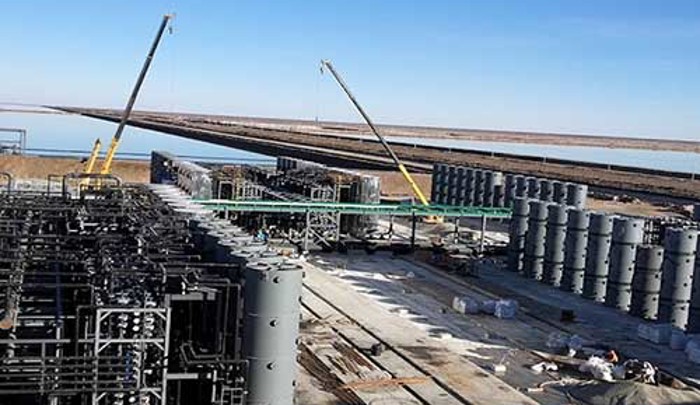
DLE from Brine |

Solar Evaporation Brine Extraction |
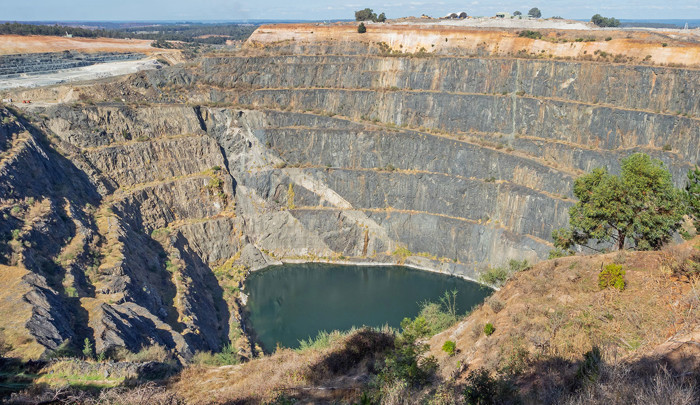
Hard Rock Mining |
|
|---|---|---|---|
| Feedstock | Continental brine / geothermal | Continental brine | Rock / spodumene |
| Project implementation time | 5-7 years | 13-15 years | 8-10 years |
| Lithium carbonate production time | 2 hours | 2-3 years | 3-6 months |
| Lithium yield | 80-95% | 20-40% | 6-7% |
| Average footprint per 1,000 mt LCE | 1.4 acres | 65 acres | 115 acres |
| System design | Mobile / stationary | Stationary | Stationary |
| Environmental impact | Minimal | Soil- and water contamination | Soil- and water contamination |
| Water consumption per 1,000 mt LCE | 80 million gallons | 550 million gallons | 250 million gallons |
| CO₂ footprint per 1,000 mt LCE | 1.5 million kg | 5 million kg | 15 million kg |
| Average invested capital per 1,000 mt LCE | $45 million | $50 million | $60 million |
| Average cost per metric ton | $5,700 | $5,800 | $6,900 |

DLE from Brine

Solar Evaporation Brine Extraction

Hard Rock Mining
Direct Lithium Extraction from Brine
Please have a look at traditional direct lithium extraction from brine.
Direct Lithium Extraction (DLE) represents a transformative approach to lithium extraction, offering numerous advantages over traditional methods. DLE technologies can be classified into adsorption, ion exchange, and solvent extraction processes. These innovative techniques enable lithium extraction directly from complex brines with high concentrations of various ions.
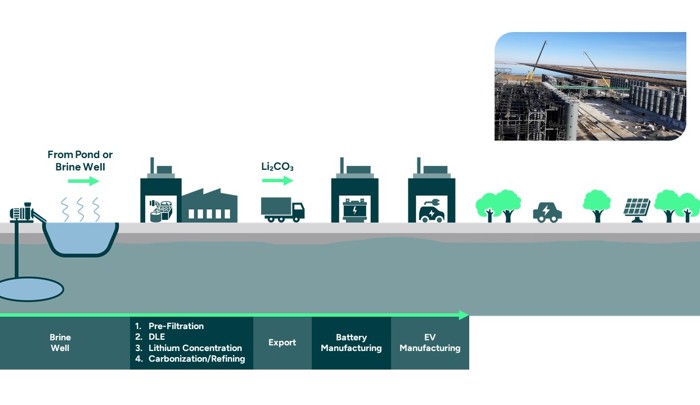
Solar Evaporation Brine Extraction
Please have a look at traditional lithium extraction from solar evaporation brine.
Solar evaporative brine processing has been a dominant method for lithium extraction, particularly in South America's Salars. Solar evaporation is commonly employed in lithium extraction from brine and relies on solar evaporation to concentrate lithium and other salts. The brine is pumped into expansive evaporation ponds, occupying vast areas, where it undergoes a year-long process to achieve sufficient lithium concentration. However, this method presents several concerns:
- It consumes an immense amount of water, further straining regions already facing water scarcity.
- The recovery rates are relatively low, typically capturing only about 50% of the original lithium content of the brine.
- The disposal of waste salts and the use of chemical reagents pose environmental challenges.
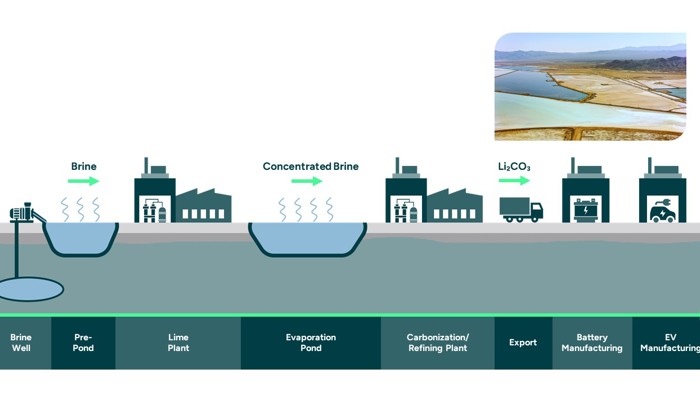
Hard Rock Mining
Please have a look at traditional lithium extraction from hard rock mining.
Hard rock mining, focusing on extracting lithium from spodumene-bearing pegmatites (or clusters of rocks and crystals), involves energy-intensive processes and chemical usage. After mining the ore, it undergoes crushing, concentration, and chemical treatments, including roasting and leaching, to obtain a lithium concentrate. This method poses several environmental concerns, such as chemical waste disposal and groundwater contamination, rivers, and soil contamination. The transportation of crushed rock to China for processing adds to the carbon footprint and the need for more transparency regarding waste handling practices.
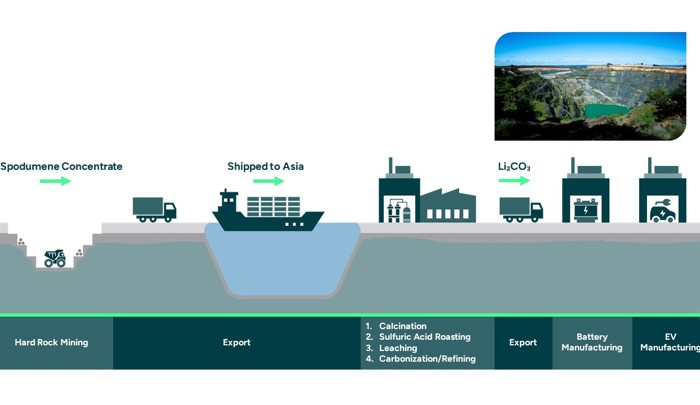
We Turn Wastewater Into High-Value Minerals

Our Solution
Sustainable lithium extraction from oilfield wastewater with pioneering process for DLE combined with advanced water treatment solutions.
Lithium Harvest is pioneering a future where environmental stewardship and industrial progress converge. Our proprietary and patented solution efficiently transforms oilfield wastewater into high-purity, battery-grade lithium compounds, revolutionizing lithium extraction. By employing Direct Lithium Extraction (DLE) combined with advanced water treatment, we achieve production in just two hours - a stark contrast to the years-long processes of traditional methods.
Our agile and modular facilities, strategically co-located with midstream operators, drastically shrink operational footprints by up to 99% and slash capital expenditures by up to 70% compared to traditional mining. We do extraction and refining in decentralized facilities. Operating directly on the feedstock suppliers' land, we maintain a minimal environmental impact, safeguard wildlife, and offer beneficial reuse options.
In the burgeoning markets for electric vehicles and batteries, Lithium Harvest stands as a beacon of sustainable extraction, demonstrating
that high-value minerals can be responsibly sourced.
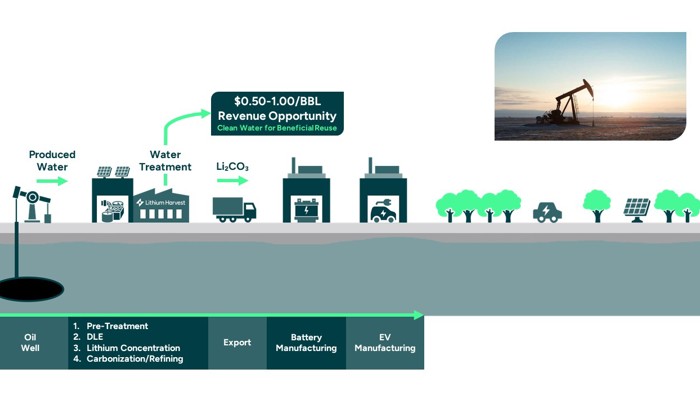
We believe that our patented technology is the fastest to market and lowest cost of any lithium mining technology in the market.
Direct Lithium Extraction - But Different
Our patented technology is Direct Lithium Extraction (DLE) based on adsorption technology. Using wastewater from oil & gas production as our feedstock allows us to bring lithium operations online much quicker and at a lower cost than any other DLE technology in the market.

Lithium Harvest Solution |

DLE from Brine |

Lithium Harvest Advantage |
|
|---|---|---|---|
| Feedstock | Produced water | Continental brine / geothermal | No drilling permits needed |
| Project implementation time | 12-15 months | 5-7 years | No asset acquisition |
| System design | Modular and mobile | Mobile / stationary | Unique modular design |
| Water consumption | 20 million gallons | 80 million gallons | Water recycled for secondary reuse |
| CO₂ footprint | Neutral | 1.5 million kg | Offsets CO₂ footprint from wastewater |
| Average invested capital per 1,000 mt LCE | $18 million | $45 million | No land acquisition |
| Average cost per metric ton | $4,550 | $5,700 | Low energy technology |

Lithium Harvest Solution

DLE from Brine

Lithium Harvest Advantage
Lithium Harvest vs. Traditional Lithium Mining
Technology Benchmark - Environmental Impact
Zero-Carbon Footprint
Our innovative method eliminates the necessity for transporting materials to separate refining locations. Our low-pressure, energy-efficient process also relies on solar energy as the primary power source, diminishing our environmental impact. We use electricity in our production, which creates a carbon footprint. However, when we offset that against the carbon emissions saved in the oilfield wastewater disposal, we are actually carbon neutral. We save up to 15 million kg of CO₂ emitted by traditional lithium mining per 1,000 metric tons of lithium carbonate produced.
Compact Facility Design: Eco-Conscious Operations
Our dedication to environmental stewardship is evident in the design of our facilities. Lithium Harvest’s operations are strategically located alongside produced water treatment centers. Our facilities are modular and compact, designed for easy integration and quick deployment without large ponds or extensive pipelines like conventional extraction technologies. This strategy not only conserves space but also safeguards the local environment and wildlife, preventing any extra ecological disruption.
Minimal Water Consumption
We do not use any fresh water in our production process. In fact, we even have the ability to clean the oilfield wastewater after the lithium extraction process and use it for secondary reuse. Our extraction process recycles more than 90% of the water and does not generate any waste by-products, reflecting our commitment to protecting the Earth’s vital water resources. We save up to 96% of the water used in traditional lithium mining, which equals more than 500 million gallons of water per 1,000 metric tons of lithium carbonate produced.
Technology Benchmark - Business Case
Optimized Capital Expenditure
We’ve streamlined the initial investment in lithium extraction infrastructure. By eliminating the need for land acquisition and drilling rights, we’ve significantly reduced CapEx. Our modular plant design is cost-effective and allows for rapid deployment and expansion, easily fitting into various operational scales.
Cost Leadership in Lithium Production
We have achieved a breakthrough in cost-reduction in lithium compound production. Our technology delivers up to 95% yield, and our fully automated, low-energy facility ensures efficiency at every stage. Our on-site production and refining processes, alongside fixed-price feedstock agreements, allow us to offer lithium compounds at costs that are up to 35% lower than traditional mining methods, positioning us as a leader in cost competitiveness.
Accelerating Project Timelines
We’ve transformed the timeline for bringing new lithium operations online. Traditional mining operations can take up to 15 years to reach full production, but our innovative approach - leveraging existing oilfields - sidesteps the need for drilling permits. As a result, we can establish operations in just one year, a game-changing pace that reduces market entry risks. This agility in production scaling lets us rapidly meet increasing customer demands, propelling Lithium Harvest to the forefront of the industry.
The Lithium Market

The World is Facing a Lithium Shortage
Exponential Growth in Demand
Driven by the acceleration of EVs and batteries needed for energy storage, lithium demand doubled between 2019 and 2021 and is set to further quadruple between 2022 and 2030. Looking further ahead to 2040, the growth is expected to be even more pronounced. The market is predicted to witness a ninefold growth in lithium demand compared to 2022.
IEA Predicts Lithium Shortage by 2025
The International Energy Agency even predicts a lithium shortage by 2025. Lithium supply faces challenges from surging demand and because production is concentrated in a few countries.
Traditional lithium extraction from ore and brine requires large amounts of water, and over half of today’s production is in areas with high water stress. Governments have been reluctant to grant new permits, leading to significant delays and cancellations in bringing new lithium operations online.

The World Needs More Sustainable Lithium
The demand for lithium is soaring due to an accelerating global shift towards renewable energy and electric vehicles (EVs). However, this surge has spotlighted a pressing need: the transition to more sustainable lithium extraction methods.
Traditional lithium mining, primarily through open-pit mines or brine evaporation ponds, raises significant environmental concerns. These methods can lead to water depletion, soil degradation, and extensive carbon emissions. Recognizing these challenges, industries and governments worldwide are turning their focus towards sustainable lithium extraction methods.
The push for sustainable lithium is not just an environmental imperative but also a business one. Major players in the EV and tech industries, conscious of their carbon footprint and eager to appeal to environmentally aware consumers, are increasingly seeking responsibly sourced lithium - on both the buy and sell sides, sustainability is now a critical metric when supply agreements are being discussed.
Benchmark Minerals, a leader in commodity price assessment and market intelligence, has developed a forecast of global mined lithium production by Benchmark ESG Tier. This forecast demonstrates a significant surge in the supply of sustainable lithium, underscoring an even higher potential if the world transitions to more sustainable lithium production.
The Imperative for Sustainable Lithium: A Global Necessity
- Environmental Concerns: Traditional mining methods, such as open-pit mines and brine evaporation, pose serious environmental threats.
- Sustainable Shift: The industry and governments are pursuing sustainable lithium extraction techniques to mitigate these impacts.
- Sustainability as a Metric: Major EV and tech companies prioritize responsibly sourced lithium, influencing supply agreements.
- Strategic Advantage: Companies capable of supplying sustainable lithium are setting the pace for a greener future and carving out a competitive edge in a market at the cusp of transformation.

The Lithium Market
Geography
Today, about 90% of all lithium is produced in Australia, Chile, China, and Argentina. Australia is the largest lithium producer, making over 40% of all lithium in 2022. However, most of the ore from Australia is processed in China, which ultimately controls the refined product.
Lithium Sources
In 2022, 55% of lithium came from ore mining and 45% from brine extraction. Put simply, lithium from Australia comes from ore mining, while in Chile and Argentina, lithium comes from continental brines.
U.S. Production
U.S. lithium production is down from 27% of global production in 1996 to less than 1% in 2021. As the Inflation Reduction Act highlights, the U.S. must become self-sufficient with lithium.
End-Use Markets
The increased adoption of EVs is driving the current surge in demand for lithium. However, lithium is used in many end markets, including batteries for consumer electronics, air treatment, ceramics, glass, greases, and casting powder.

It´s important to identify lithium resources in the U.S. so that our supply does not rely on single companies or countries in a way that makes us subject to economic or political manipulation.
Global Battery Gigafactory Capacity: A New Lithium Deficit?
As the world accelerates towards electrification, the expansion of battery giga-factories is seen as a critical step in meeting the surging demand for electric vehicles (EVs) and renewable energy storage. However, this rapid growth highlights a pivotal challenge: the looming deficit of lithium, the vital component of lithium-ion batteries.
According to insights from Benchmark's Lithium-ion Battery Database and Lithium Forecast, the current projection for lithium supplies can support the production of just 3,200 GWh of lithium-ion batteries in 2030. This figure becomes even more concerning when we consider the future. If every announced giga-factory is ready for operation by 2030, only 36% of this capacity would be utilized without substantial investments in lithium supply chains.
This scenario underscores a critical bottleneck: Lithium supply is emerging as the primary limiting factor for battery production. The burgeoning gap between giga-factory capacity and available lithium supply signals a potential deficit, which could significantly slow the pace of the global energy transition.

Rapid Growth of U.S. Demand and Battery Manufacturing
The lithium market is on the cusp of a transformative era driven by the rapid expansion of the U.S. battery manufacturing sector. Pivotal legislation such as the Inflation Reduction Act has been a catalyst, significantly accelerating the development of the EV supply chain within the United States.
As we look towards 2025, U.S. battery manufacturing capacity is projected to soar to 750 GWh. This growth trajectory is expected to continue, with capacity reaching over 1300 GWh by 2030 - marking an exponential 13-fold rise compared to today’s output of 100 GWh. The implications of this growth are profound, with a ripple effect across the local and global lithium supply chains. Europe mirrors this trend, with over 50 giga-factories planned for nearly 1500 GWh by 2030.
The burgeoning number of giga-factories - estimated at 45 across the U.S. - tightens the competition for locally sourced raw materials. By 2025, the domestic demand for lithium is projected to outpace the refining capacity by tenfold, emphasizing the urgency for increased production and refining capabilities.
The role of lithium is unequivocal. An estimated 1.2 million tons of Lithium Carbonate Equivalent (LCE) in the U.S. alone are needed to support this manufacturing upswing for 2030.

Lithium Price
Despite challenges in pricing and demand, the US lithium sectors are expected to grow in 2024. This growth is attributed to the potential startup of new construction projects, which are crucial for providing much-needed domestic supply. This development indicates a positive outlook for the lithium market in North America.
The lithium price experienced a significant drop from its record highs in 2022, over $70,000/tonne, primarily due to decreased demand from the battery and EV sectors in 2023. Market analysts project a stabilization of prices in the range of $20,000/t to $24,000/t from 2024 to 2026. However, as EV sales continue to grow, other industry analysts forecast demand growth will accelerate, leading to prices rising by the end of 2024. The forecast prices will average $30,000 per metric ton from 2024 to 2030, which is still two to three times higher than lithium prices from 2019 through 2021.
The lithium market is currently navigating a delicate balance between supply and demand. While new extraction and processing projects are on the horizon, potentially expanding global lithium carbonate equivalent (LCE) capacity substantially, there exist concerns over potential delays in project commissioning. Additionally, the ambitious targets OEMs and battery manufacturers set - fueled by governmental initiatives and rising consumer interest in EVs - suggest that supply-demand gaps persist. This dynamic underscores the strategic importance of timely project execution and the potential for lucrative returns in a market driven by growing demand.
The Main Drivers Behind Price Volatility in 2022-2023 Have Been:
- Electric Vehicle (EV) Sales Trends: 33% YoY in 2023, below 65% in 2022, but still positive.
- Inventory Adjustments: Destocking within the battery materials sector.
- Competitive Dynamics: The emergence of a price war led by CATL impacting market pricing strategies.
- Market Sensitivities: Notable sensitivity within the demand/supply balance, influencing market stability.
Market Outlook:
- Near-Term Supply-Demand Challenges: Anticipated negative supply-demand balance from 2027, extending over the following two decades.
- Pre-2027 Lithium Availability Concerns: Potential for a lithium shortage before 2027, exacerbated by rising production costs and project delays amid current price settings and market conditions.
- Domestic Supply and Demand Dynamics: The increasing demand for domestic lithium and battery manufacturing capacity outpaces the current supply of domestic raw materials for giga-factories.
- Sustainability-Driven Demand: Growing demand for sustainably sourced lithium from businesses and governments.
- Lithium Price Projections: Lithium prices are forecasted to stabilize at $20,000 to $24,000 in the second half of 2024.

The World's Most Sustainable Lithium

Corporate Presentation
-
Unveiling the Future: Discover how Lithium Harvest is poised to shape the energy industry's future with our innovative technology and solution.
-
Driving the Green Energy Revolution: Explore the vital role of lithium in driving the global green energy transition and how Lithium Harvest is at the forefront of this transformation.
-
Seizing Market Opportunities: Gain insights into the current market situation, technology benchmarking, and vast market opportunities.
Please see our corporate presentation from March 2024.
Download PDF, 3.87 MBCorporate Contact
-

Sune Mathiesen
- Chairman & CEO
- +1 713 887 0751
- sma@lithiumharvest.com









